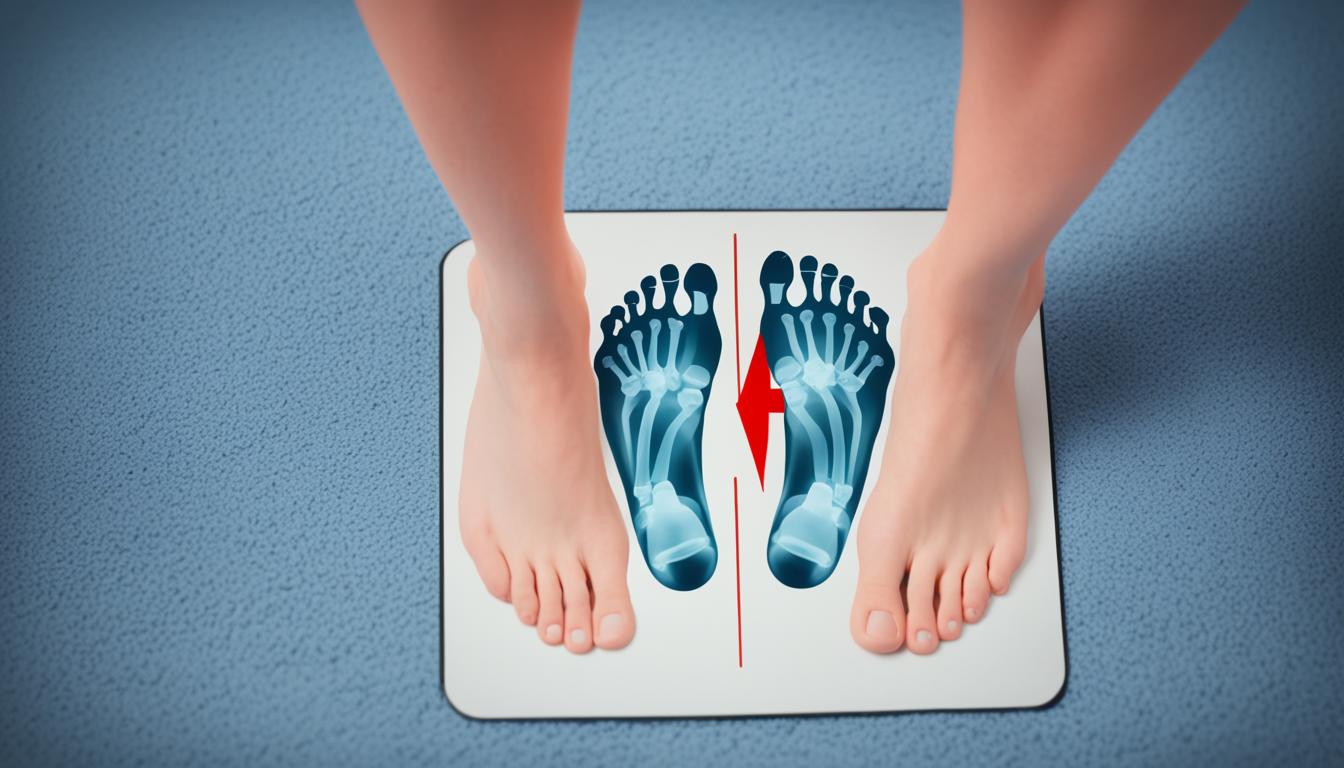Best Insoles for Morton’s Neuroma – Top Picks for Relief
Morton’s neuroma impacts over 200,000 Americans yearly, according to the American Podiatric Medical Association. It’s a common foot issue that brings much pain. This shows the urgent need for finding good relief. Here, we’ll go through the top insoles that can help with the pain, swelling, and discomfort of Morton’s neuroma.
This condition affects the nerves at the foot’s front, leading to sharp or tingly feelings. It’s key to pick the best insoles to handle Morton’s neuroma. We’ll highlight the top insoles available to tackle this condition.
Key Takeaways
- Morton’s neuroma is a common foot condition that affects the nerves in the ball of the foot, causing pain, swelling, and discomfort.
- Choosing the right insoles is crucial for managing the symptoms of Morton’s neuroma.
- Insoles with features like arch support, metatarsal pads, and shock absorption can provide relief.
- Consulting with a healthcare professional can help you select the most suitable insoles for your individual needs.
- Proper care and maintenance of your insoles are essential for ensuring their continued effectiveness.
Understanding Morton’s Neuroma
Morton’s neuroma affects the nerves in the foot’s ball, causing a sharp or tingling feeling. We’ll look into what this condition is, its causes, and the symptoms.
What is Morton’s Neuroma?
It causes a nerve to get thicker between the third and fourth toes. This makes the ball of the foot feel painful, swollen, or numb.
Causes and Risk Factors
The main causes of Morton’s neuroma are not clear. Yet, certain things like tight shoes, high-impact sports, and foot deformities can up the risk. If you’ve had nerve pain or foot swelling before, you might be more at risk.
Symptoms of Morton’s Neuroma
Symptoms include a sharp, burning feeling in the foot’s ball that goes to the toes. You may also feel numb and see swelling in the foot. These issues get worse with activities like walking or wearing high heels.
Importance of Proper Footwear
Having the right shoes is key to dealing with Morton’s neuroma. Shoes that don’t fit well can make the pain worse. They need to have enough support, cushioning, and room for your toes. We’ll look at how the wrong shoes can hurt you and what to seek in new shoes to help your feet feel better.
Impact of Ill-Fitting Shoes
Shoes that are too small, too narrow, or don’t support your arches can press the wrong way on your feet. This happens right where Morton’s neuroma is most painful. As a result, your feet can become more swollen and hurt more. High heels and tight dress shoes are also bad because they squeeze your toes and keep your feet from moving as they should.
Shoe Features to Look For
For Morton’s neuroma, focus on shoes that keep your feet happy and healthy. Choose shoes that are comfy, give good arch support, and let your toes move freely. A wide toe box is important because it lets your toes spread out naturally. Shoes with a firm arch support ease the pressure on your feet. Also, pick ones with soles that absorb shocks to make your step softer. With these shoe qualities, you can lessen the pain of Morton’s neuroma and look after your foot wellness.
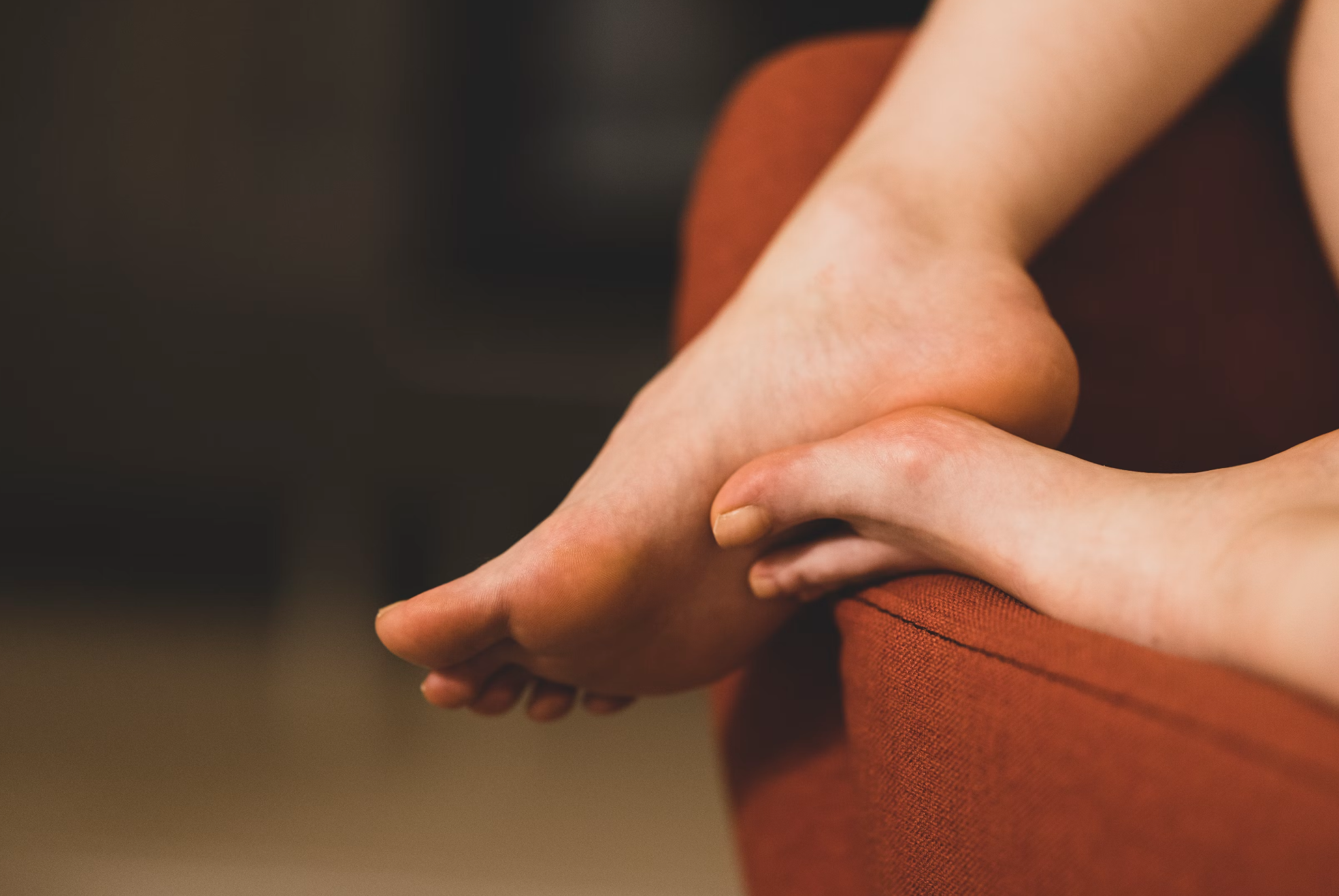
Role of Insoles in Managing Morton’s Neuroma
Insoles are key in easing the pain of Morton’s neuroma. They have arch support, metatarsal pads, and cushioning. These features work to lower pain, swelling, and discomfort linked to this problem.
How Insoles Can Provide Relief
Insoles for Morton’s neuroma aim support at the foot’s trouble spots. For example, metatarsal pads can spread out pressure. This lessens the nerve irritation. Arch support and cushioning dampen the force that worsens the issue, elevating comfort and ease of movement.
Types of Insoles for Morton’s Neuroma
For those with Morton’s neuroma, there are many insole choices. Custom orthotics, made by experts, fit perfectly and give spot-on support. Ready-made insoles are another option. These are more affordable and have features like metatarsal pads and arch support for quick relief.
It’s crucial to talk to a healthcare provider about which insoles are best for you. While insoles help in the short run, they might need to be part of a bigger treatment plan for long-term care of Morton’s neuroma.
Best Insoles for Morton’s Neuroma
If you’re dealing with Morton’s neuroma and its pain, the right insoles can really help. Our best insoles for this condition offer great arch support, padding for the front of your foot, and can absorb shock. They make your feet feel better, and they help you walk easier.
Our Top Picks
After a lot of research, here are our top picks for Morton’s neuroma:
Roamingfeet Orthotic Arch Support Insole
We highly recommend the Roamingfeet Orthotic Arch Support insoles for those seeking relief from Morton’s Neuroma and ball of foot pain.

Pros
- The built-in metatarsal pad provides targeted relief for ball of foot pain, metatarsalgia, and Morton’s Neuroma.
- The dual-layer cushioning offers superior comfort and shock absorption.
- The PowerStep arch shape provides excellent support and stability for the foot and ankle.
Cons
- The insoles may be too thick for some shoes.
- The sizing may not be accurate for all individuals.
- The insoles may take some time to break in and feel comfortable.
Our experience with the Roamingfeet Orthotic Arch Support insoles has been very positive. We found that the built-in metatarsal pad provided targeted relief for ball of foot pain and Morton’s Neuroma. The dual-layer cushioning made the insoles comfortable to wear for extended periods of time, and the Roamingfeet arch shape provided excellent support and stability for our feet and ankles.
One potential downside to the insoles is that they may be too thick for some shoes, particularly dress shoes. Additionally, the sizing may not be accurate for all individuals, so it may be necessary to try a few different sizes to find the best fit. Finally, the insoles may take some time to break in and feel comfortable, particularly for those with sensitive feet.
PowerStep Pinnacle Plus Met
We were impressed with the PowerStep Pinnacle Plus Met insoles from the moment we put them on. The built-in metatarsal pad provided instant relief for ball of foot pain, and the contoured arch support insert cradled our feet in all the right places. The dual-layer cushioning was comfortable and supportive, allowing us to wear them all day without any discomfort.
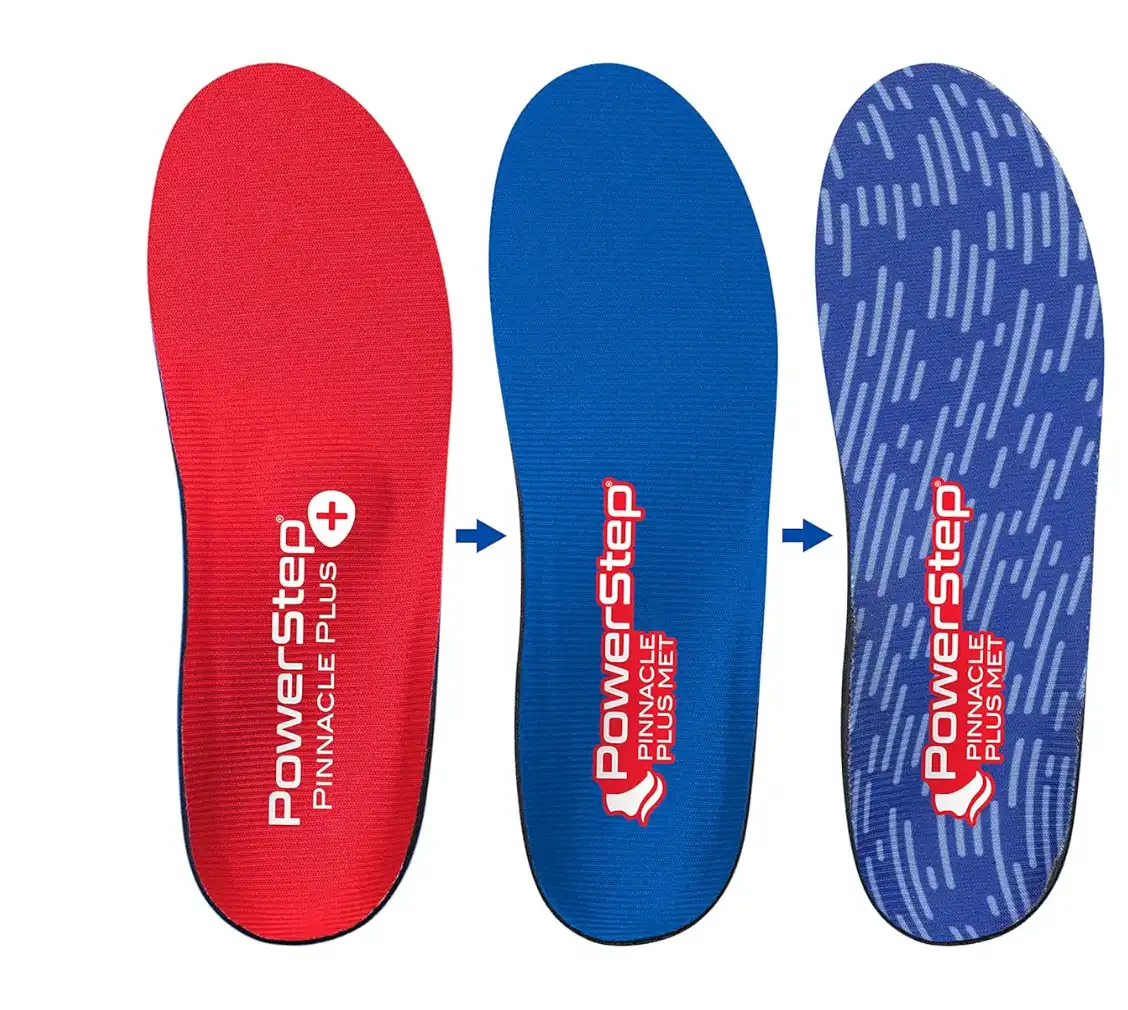
Pros
- The built-in metatarsal pad provides targeted relief for ball of foot pain and Morton’s Neuroma.
- The contoured arch support insert cradles the arch and heel, adding stability and motion control to limit excess stress on feet, ankles, joints, and tendons.
- The dual-layer cushioning provides enhanced comfort from heel to toe, making them ideal for all-day wear.
Cons
- The insoles may be too wide for some shoe styles, requiring trimming for a proper fit.
- Some users may find the arch support to be too firm for their liking.
- The price point may be higher than other insoles on the market
Trustfeet Heavy Duty Support Metatarsal Pain Relief Insoles
We have been using the Trustfeet insoles for a few weeks now and have noticed a significant improvement in foot pain and discomfort. The heavy-duty support provides all-day comfort and cushioning, making it an ideal choice for people with different lifestyles. The insoles are suitable for casual shoes, athletic shoes, and wide work boots/shoes.
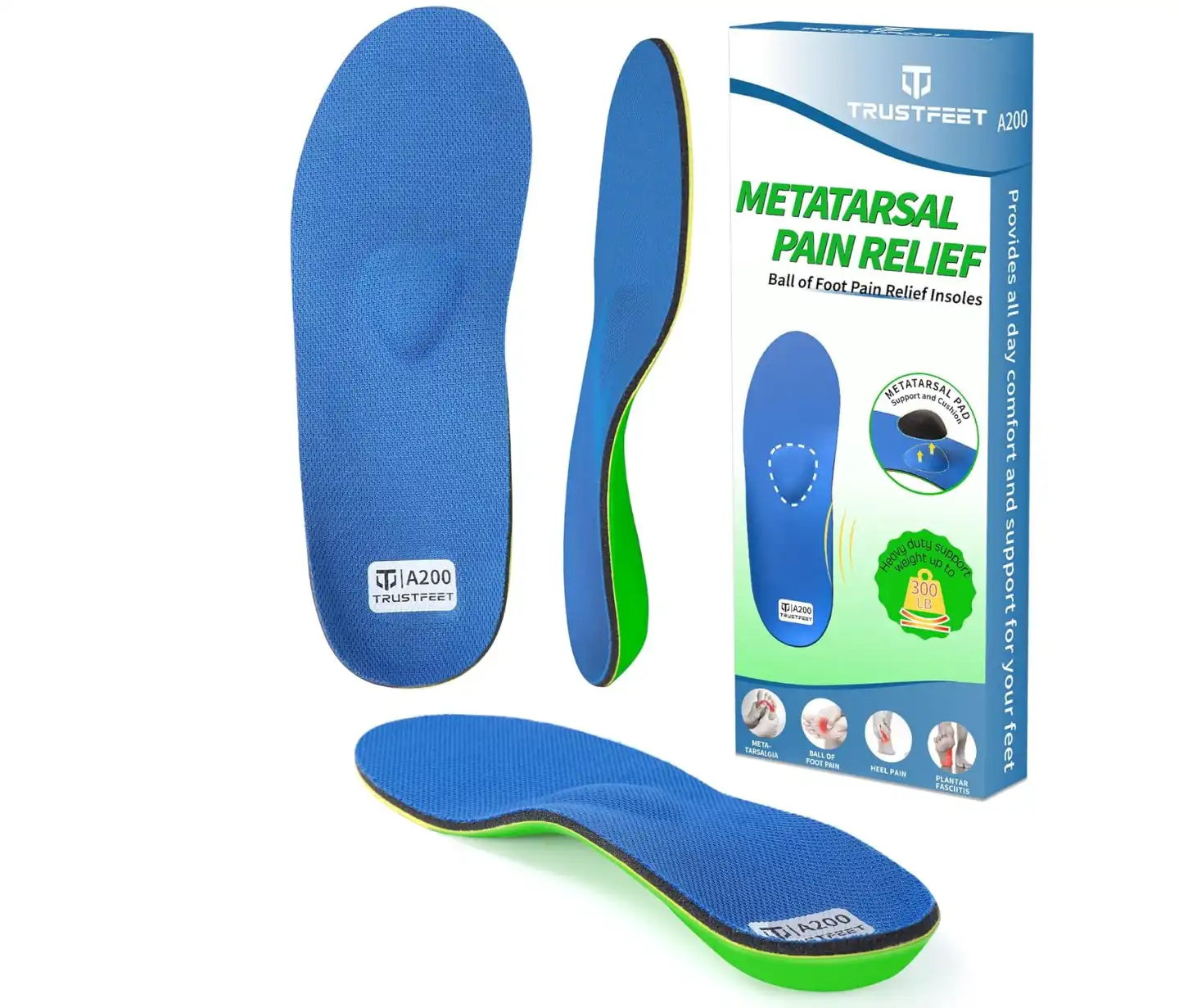
Pros
- The U-shaped heel design provides stability and reduces the risk of ankle sprains or other injuries caused by unstable footwear.
- The upgraded orthotics designed for metatarsalgia provide moderate control and support during running and standing, helping to realign the entire body and alleviate foot pressure.
- The non-slip fabric design is good for odor control and breathable to keep your feet comfortable and dry.
Cons
- The insoles may be wider than your standard shoes, so it is important to carefully choose the size.
- The heel is very wide, so you may need to cut a lot of it to fit in your shoes.
- Not suitable for all-day walking and running.
The metatarsalgia relief technology is particularly impressive, providing moderate control and support during running and standing, helping to realign the entire body and alleviate foot pressure. The upgraded orthotics designed for metatarsalgia are also ideal for relieving conditions such as Morton’s neuroma, ball of foot pain, mild to moderate flat feet, overpronation, and other common foot ailments.
Kelaide Orthotics Arch Support Insoles
If you’re looking for relief from foot pain caused by Morton’s Neuroma or other conditions, Kelaide Orthotics Arch Support Insoles may be worth considering.
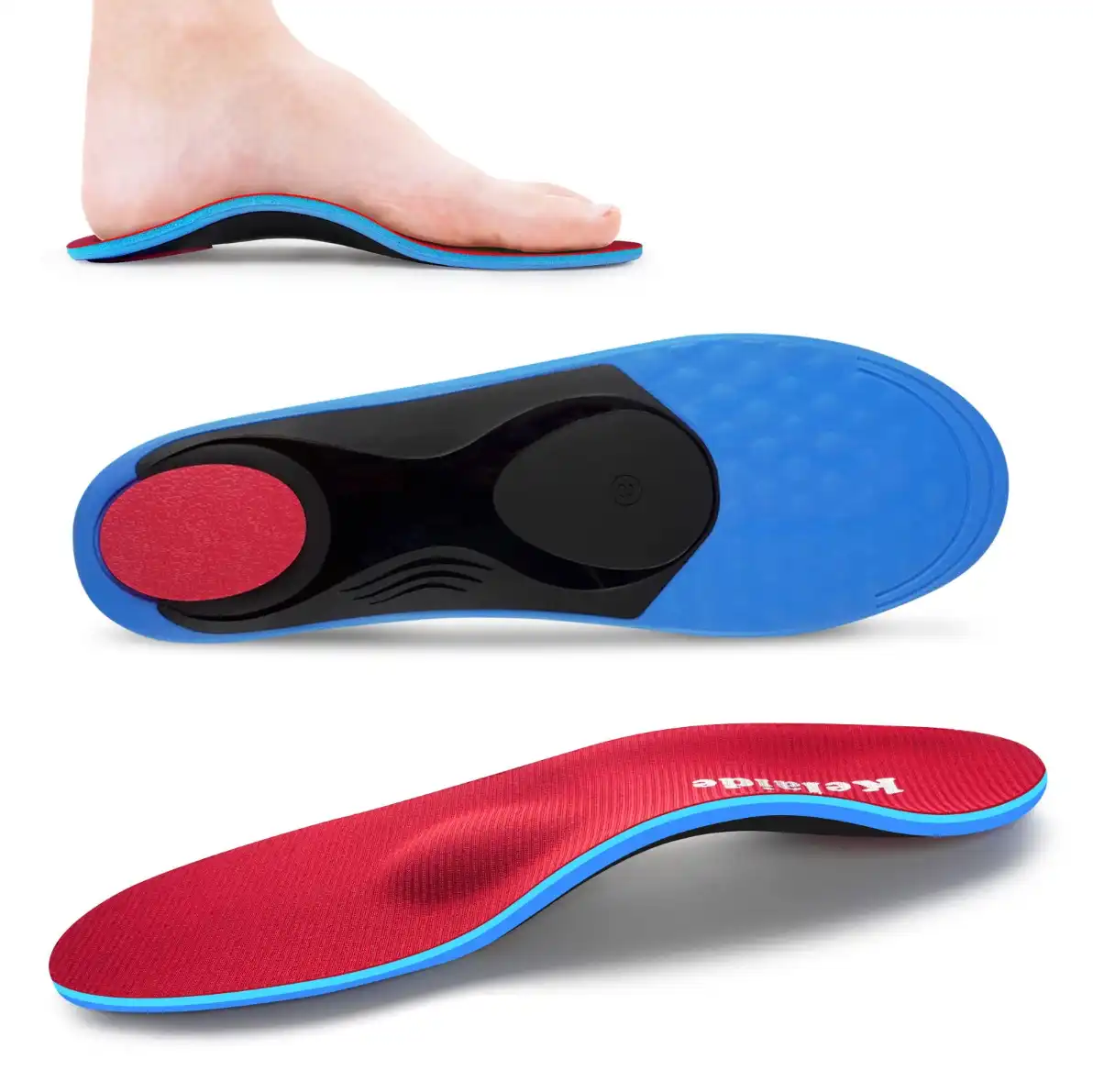
Pros
- The built-in metatarsal pad helps relieve and prevent pain from Flat Feet, Plantar Fasciitis, Metatarsalgia, Morton’s Neuroma, and Ball of foot pain.
- The neutral arch support stabilizes and aligns the feet, reducing excessive pressure on the Plantar Fascia ligament and providing relief from plantar fasciitis.
- The full-length insoles with metatarsal support alleviate pain in the ball of the foot.
Cons
- First-time metatarsal insoles users may need to get used to them for a while, adding some time each day to get used to wearing them all-day.
- The front is too soft for some users who need a firmer bottom to protect recovering broken bones in their foot.
- The insoles may be too rigid and have a high arch for some users.
We tried Kelaide Orthotics Arch Support Insoles and found them to be effective in reducing foot pain caused by Morton’s Neuroma. The metatarsal pad and neutral arch support helped alleviate pressure on the foot, reducing pain and discomfort. However, we did find that the insoles took some time to get used to, and the front was too soft for some users.
Footlogics Orthotic Shoe Insoles
Footlogics Orthotic Shoe Insoles are helping anyone suffering from Morton’s neuroma. Developed by Australian podiatrists, these insoles are medically approved and provide amazing support and cushioning, making them perfect for combating heel pain, spurs, Achilles tendonitis, and other foot complaints.
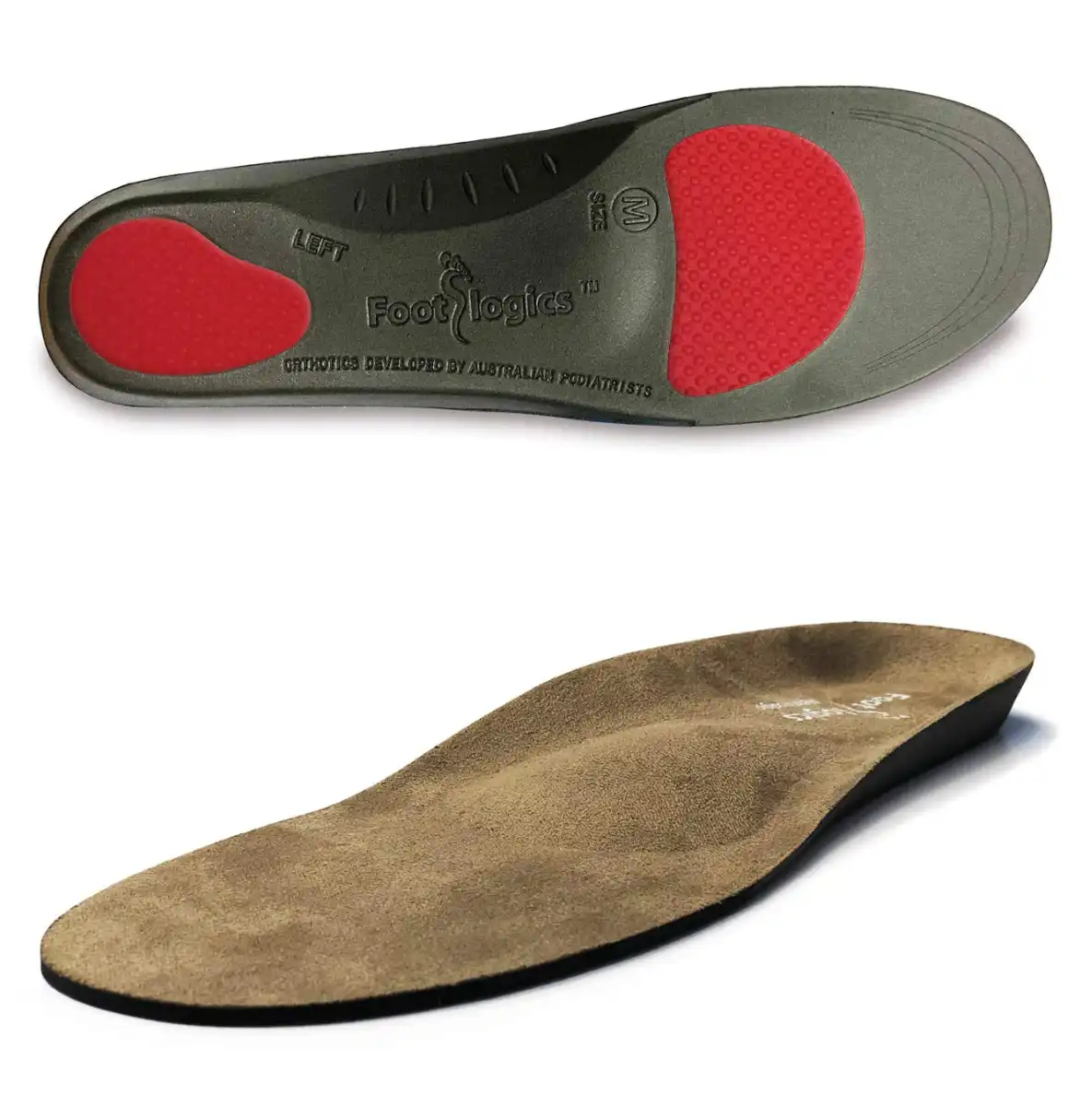
Pros
- Provides amazing support and cushioning
- Full-length with built-in raise for ball of foot pain and Morton’s neuroma
- Fits all types of lace-up shoes, including sports and athletics shoes and work boots
Cons
- May take some time to get used to the built-in raise
- May not fit well in shoes with narrow toe boxes
- Some users may find them too thick for their liking
These insoles are made from lightweight yet supportive Q-E.V.A. and come with shock-absorbing Podflex heel and forefoot padding. They also have a built-in metatarsal raise, deep heel cup, and strong arch support, which can be trimmed to size with scissors if needed.
Factors to Consider When Choosing Insoles
Choosing the right insole for Morton’s neuroma involves thinking about a few key things:
- Arch Support: Good arch support is key. It helps lessen irritation and spreads foot pressure evenly.
- Metatarsal Pad: This pad eases pressure on the foot’s ball, where the neuroma is. It can make a big difference.
- Shock Absorption: Insoles that absorb shock well reduce pain during activities. They’re great for comfort.
- Fit and Comfort: Your insoles should fit snugly in your shoes, offering a stable base for your feet. This is important.
- Lifestyle and Activities: Think about what you do daily and what support you need from your insoles. They should match your activities and footwear.
Getting advice from a health expert can also help. They can guide you to the right insole for Morton’s neuroma and your foot’s overall health.
Caring for Your Insoles
Looking after your insoles is key in managing Morton’s neuroma well. By maintaining them, you help ensure your feet get the support they need. We’ll cover how to care for your insoles and when to get new ones.
Proper Insole Maintenance
Clean your insoles regularly to keep them in good shape. Use a mild soap and warm water for this. Be careful not to get the whole insole wet.
Let your insoles dry fully before putting them back in your shoes. Remember to switch them between your shoes to wear them out evenly. This helps them last longer.
Store your insoles properly to help keep them comfy. Always keep them in a cool, dry place. Don’t leave them in your shoes for too long without wearing them. This can ruin them quicker.
When to Replace Your Insoles
Your insoles might need replacing sooner or later. It depends on the material quality, how much you use them, and wear and tear. Normally, insoles are good for 3 to 6 months. But, replace them sooner if they start to wear out or lose their support.
If your insoles no longer feel good, they might need changing. Discuss with a doctor if you’re not sure when to get new ones. They can give you advice based on your specific situation.
Complementary Treatments for Morton’s Neuroma
Insoles help a lot with managing morton’s neuroma. Yet, they might not solve it completely. We will look at other treatments that work well with insoles for better relief.
Lifestyle Modifications
Changing your lifestyle can make a big difference with morton’s neuroma. Start by avoiding high heels and tight shoes. These put too much pressure on the foot, making the condition worse. Choose shoes that are comfy and have plenty of space for your toes. This will help relieve the pain and stop it from getting worse.
Medical Interventions
If lifestyle changes and insoles aren’t enough, you might need medical help. For pain and swelling, steroid shots can help by reducing inflammation. Sometimes, you’ll need a podiatrist to come up with a bigger plan for fixing the problem and finding long-lasting relief.

Conclusion
Choosing the right insoles is key to managing Morton’s neuroma symptoms. Understand the condition. Pick the right footwear and insoles. Plus, create a treatment plan with complementary treatments.
Doing this helps people with Morton’s neuroma lead an active and comfortable life. Always talk to a doctor or podiatrist for the best treatment for you.
Using insoles and other measures can help with Morton’s neuroma pain and discomfort. By being proactive and working with your healthcare provider, you can get lasting relief.
Your foot health is very important. Dealing with Morton’s neuroma by using insoles and other help can greatly improve your comfort. Enjoy the path to better foot health. Revel in the freedom to move and explore, free from the hold of this condition.

